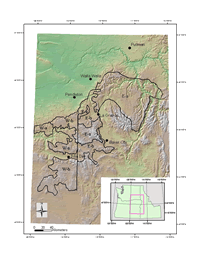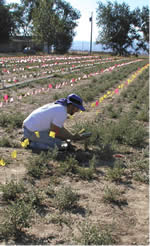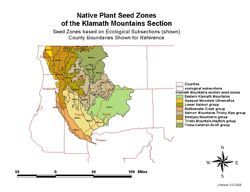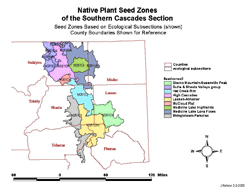USDA Forest Service Celebrating Wildflowers
|
|
|
 |
|
Protecting Plant Genetic ResourcesChoosing the Right Plant Materials
Consideration of the origin and genetic diversity of planting stock can be one of the most important decisions in a restoration project. For details, see:
Seed zones and plant movement guidelines are used to help determine which plant materials would be best adapted to the climate and environment of a particular planting site. Developing seed zones is a slow process, involving the measurement and analysis of plant traits over several years in a common garden study. Seed zones have been developed for many important forest tree species, but guidelines are generally lacking for other native species, especially grasses and forbs. In the western regions of the Forest Service, where climates and environments tend to be extremely variable, research studies are underway to develop seed zones for a number of important restoration species, including mountain brome, bluebunch wheatgrass, prairie junegrass, Indian ricegrass, lupine, and others.
For additional information, see:
In the absence of seed zones, other sources of information are often used as surrogates in making recommendations for areas where plants materials can be successfully planted. These include plant hardiness zone maps, climate maps, or ecoregion maps (areas of similar geographic, vegetative, hydrological, and climate characteristics).
|
|
| NOTE: PDF format links require the Adobe Acrobat Reader to view. | |
| top | Disclaimers | FOIA | Privacy Policy | Quality of Information | Photo Credits & Use |
Location: http://www.fs.fed.us/wildflowers/nativeplantmaterials/rightmaterials.shtml
Last modified: Tuesday, 24-Jun-2008 21:54:56 EDT





